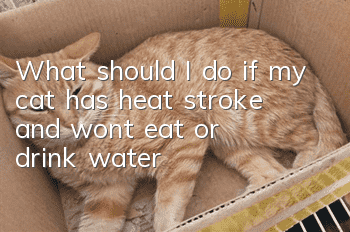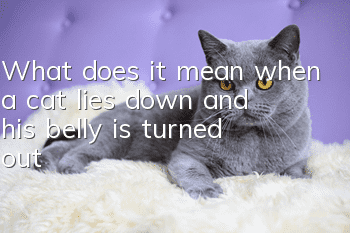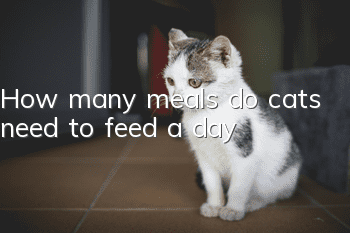What should I do if my cat has heat stroke and won’t eat or drink water?

Cat heat stroke first aid method:
1. Cool down the cat’s body and immediately ventilate the room or turn on the air conditioner. If it has heat stroke outdoors, quickly move the cat to a cool place land.
2. Wipe the cat’s body with a cool wet towel, and put the soaked towel on the cat’s head to cool down to speed up the relief of the symptoms of congestion on the cat’s head.
3. If the cat’s body temperature rises, you can immerse the cat in cold water. When the cat's body temperature drops to about 39 to 40 degrees, the cat can be taken out of the cold water and kept warm or maintained. Cooling is very important. If the cat's body temperature cannot be lowered in time, symptoms such as cerebral edema, heart failure, and kidney failure will occur, resulting in the death of the cat.
4. If a cat with mild heat stroke has saliva in its mouth, the saliva in the mouth should be cleaned. This can make the cat breathe smoothly and provide the cat with plenty of drinking water. If a cat shows symptoms of dehydration, it is best to take it to the hospital for rehydration in time. If you cannot go to the hospital, you can use a syringe to give your cat water with a small amount of salt added.
5. Generally, cats with heat stroke can recover on their own after cooling down. However, if the cat has sunken eyeballs and loose skin and loses elasticity, it must not relax its vigilance during severe heat stroke reactions. This situation is often a serious condition for cats. If it is caused by dehydration, it is best to send it to a pet hospital for rehydration treatment.
Early symptoms of heatstroke in cats:
1. Difficulty breathing (panting)
2. Drooling
3. Increased heart rate
4. Slow or no response to toys
5. Looking for a shady place to lie down
6. Unsteady walking ( Ataxia)
7. Dry mucous membranes such as gums
8. Mouth mucosa turns dark red
9. CRT time is less than 1 second (CRT is Refers to the capillary test, the time it takes for blood to return to the white discolored area when the cat's gums are pressed with a finger. If the cat's temperature rises, it will accelerate to less than 1 second.)
10. Increased femoral artery pulse Or weakened
11. Visual impairment
12. Vomiting
- Causes and treatment of urinary tract stones in cats
- What are the advantages and disadvantages of British Shorthair blue cats?
- Why is the female cat not in heat?
- What are the games about cats? Four games that cats like!
- What should I do if my cat is in a bad mood?
- How to train a cat to remember its own name? It’s actually very simple!
- Five tips to train a cat and make it stop scratching and biting!
- What should you pay attention to when adopting a stray cat? How to deal with stray cats?
- Will the cat get lost?
- Common cat diseases and medications



